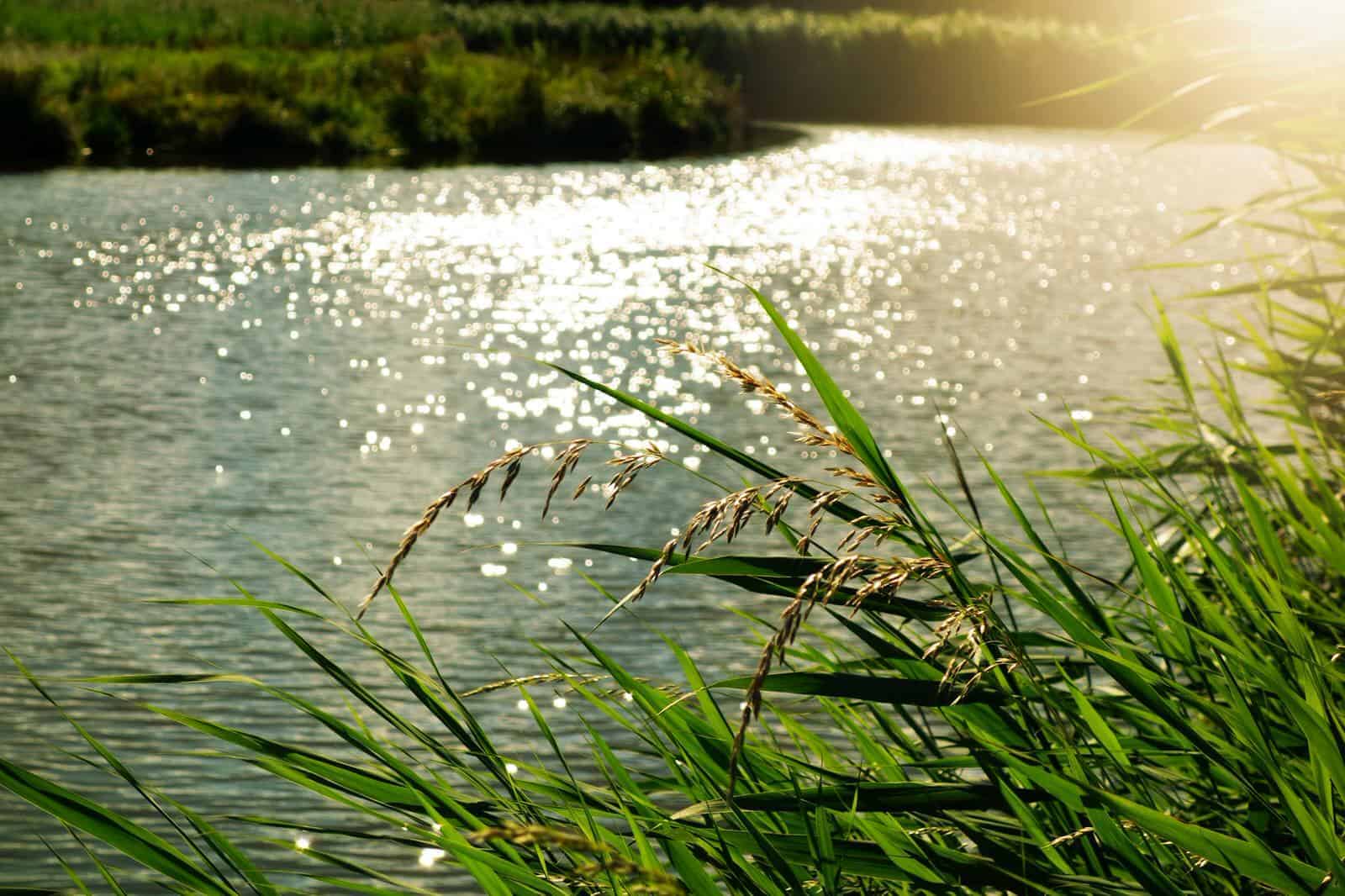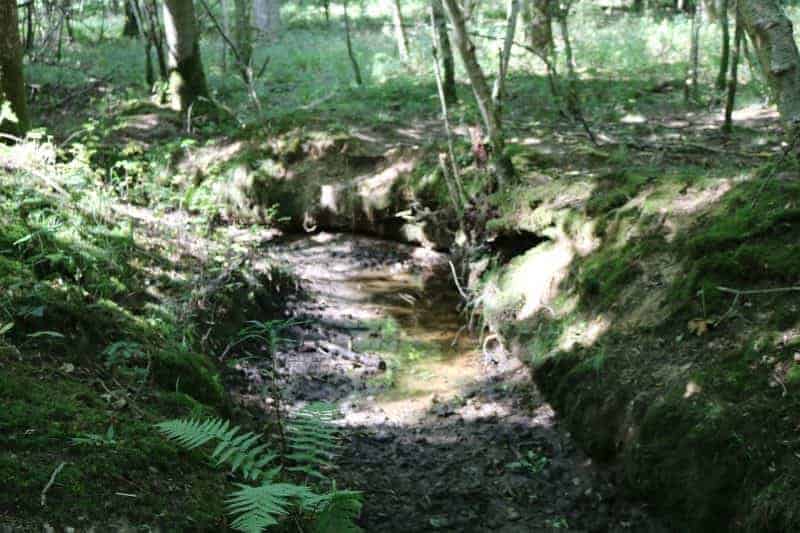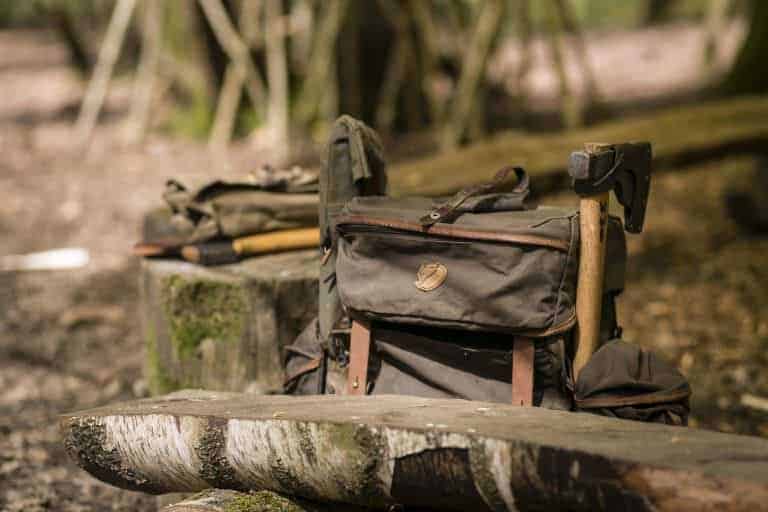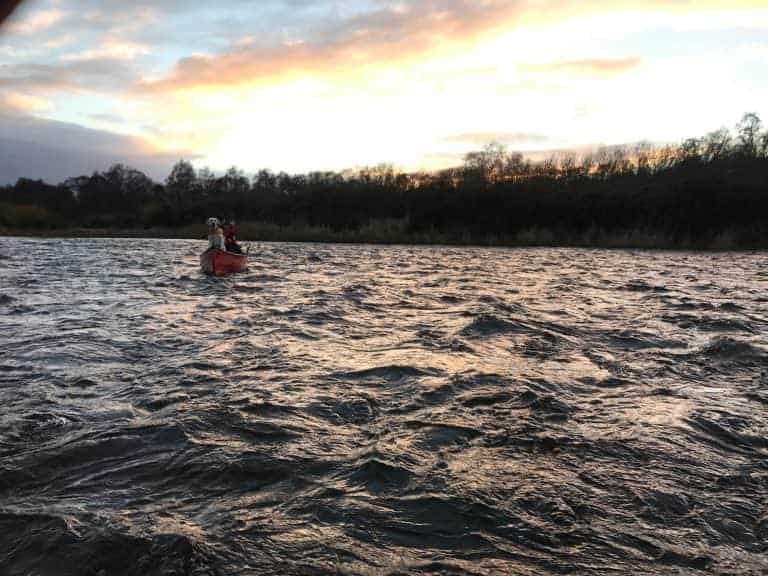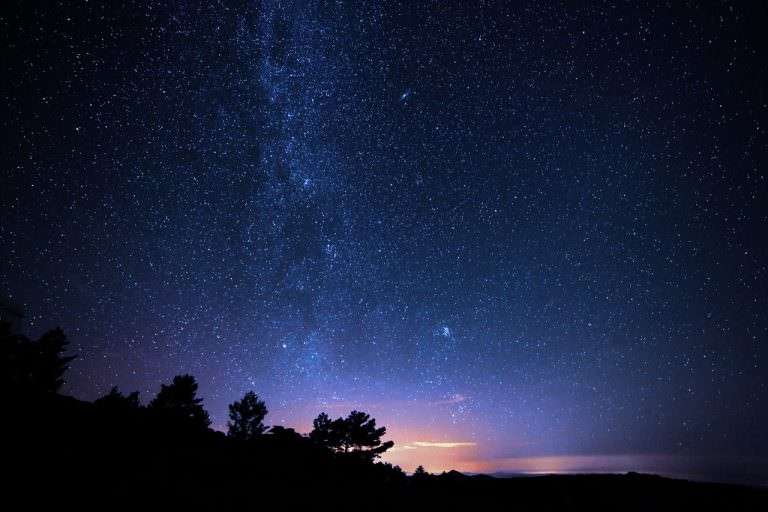How to Source and Purify Water
Sourcing and purifying water when on a long canoe trip or out wild camping in the UK can be a challenge.
But, the ability to purify water is not only a key bushcraft skill, it can change a survival situation to into a thoroughly enjoyable time outdoors.
In this week’s blog, we’re going to look at sourcing and purifying water while out and about in the UK. As always, feel free to read the whole blog or click on the links below to take you to the section that interests you the most.
Learn how to source water, build a shelter and forage for food on our weekend bushcraft course.
Click here for more information
Understanding contaminants in water
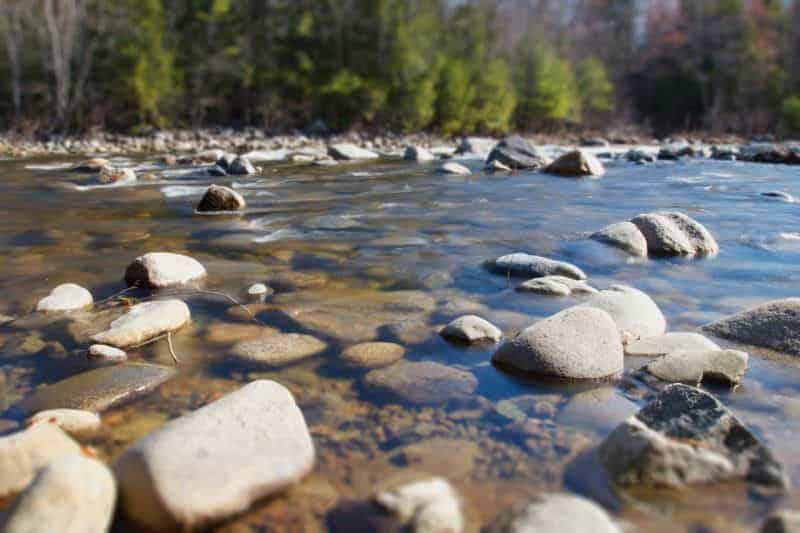
Sadly, the days of drinking water straight out of streams and rivers in the UK are long gone. Except for perhaps from springs in the wildest regions of the Cairngorms, all water in the UK should be considered to be contaminated.
This does not necessarily mean polluted in the sense that the water is obviously filthy, but polluted in the sense that it is contaminated with animal/human matter or chemical runoff from farmland.
Purifying water begins with understanding the risks involved. This means understanding the contaminants that you need to remove.
These can be divided into the following broad categories:
Broad types of contaminants
-
Turbidity
Turbidity is the number of individual particles in water (the particles themselves are invisible to the naked eye) that, together, make the water appear cloudy or hazy. In short, it is the stuff in the water that makes it look ‘dirty’.
Parasites
(With thanks to https://www.nhs.uk/conditions)
Parasites in the waters of the UK can be divided into two broad types, multicellular organisms, and single cell organisms. The thing that they have in common is that, like all parasites, they survive in/on other organisms to the detriment of the host.- Multicellular parasites in UK water include parasitic worms such as nematodes, cestodes, and trematodes. Single-cell parasites include protozoa such as Cryptosporidium and Giardia. Cryptosporidium is very tolerant to chlorine disinfection and causes Cryptosporidiosis, resulting in severe bouts of watery diarrhea. Giardia causes Giardiasis and is typically contracted by drinking water infected with feces. If you’re infected with Giardiasis or have diarrhea then you should avoid handling food or utensils that might be used by other members of your party until you have been diagnosed as free from symptoms.
-
Bacteria
The difference between bacteria and parasites is that while bacteria can live outside the human body parasites need a host in order to survive. Common bacteria found in water in the wilds of the UK, most likely from fecal contamination, include E.coli, Dysentery, Salmonella, and leptospirosis which is transmitted through rodent urine. These types of bacteria can produce a range of symptoms, most commonly sickness and diarrhea. Leptospirosis, however, can, in extreme cases lead to organ failure and internal bleeding, in the worst case scenario it can cause Weils Disease.
-
Viruses
Like parasites, viruses need a host. The difference being that viruses only need a host to multiply. They are even smaller than bacteria. Fecal contamination of water often leads to diarrhoea but in certain cases can lead to more serious diseases such as Hepatitis A.
-
Chemical pollutants
This is a serious one for the UK. Chemical pollutants in UK rivers often come from run-off from farmland pesticides and chemical fertilisers. This is particularly the case when the water source is near intensive farmland.
-
One thing to note
It is worth remembering that ‘pathogenic organism’ is a blanket term for any organism that causes disease; so that covers viruses and bacteria (both multicellular and single cell) but not chemical pollutants.
Further in this blog, we will be examining how you can protect against the types of contaminants outlined above, however first let’s look at the effects of dehydration in the wilderness.
Remember though, broadly speaking, boiling water will kill all pathogenic organisms.
Learn how to source water, build a shelter and forage for food on our weekend bushcraft course.
Click here for more information
The human body and water
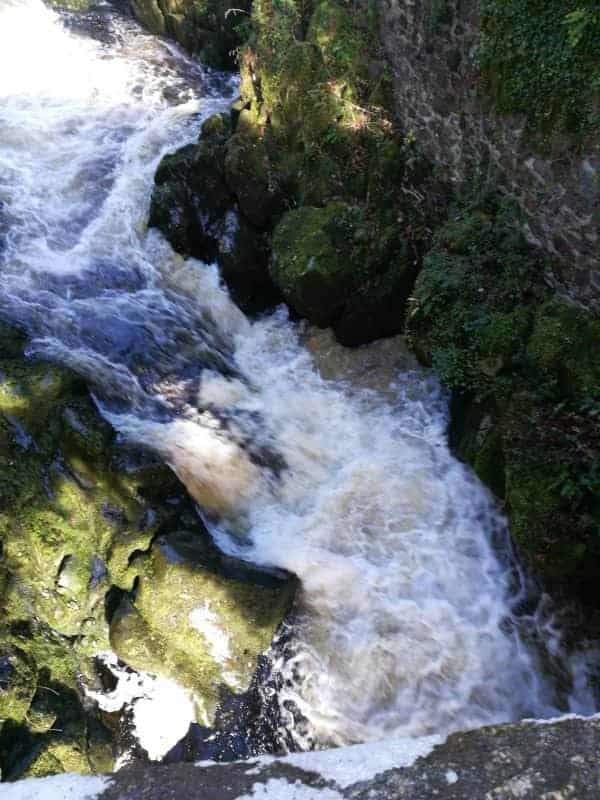
The human body cannot survive without water. This is what makes the ability to source and purify water such a key bushcraft skill. The human body can survive for around two weeks without food but only around two/three days without water, and that’s at normal temperatures with little or no physical exertion.
The need for water even on short trips
It may sound like an exaggeration but even in remote parts of the UK, such as Dartmoor, the ability to source and purify water can make or break a trip.
Think of it this way; according to the hill walker’s bible – Mountaincraft and Leadership by Eric Langmuir – a person needs 30 -35mls of water per kilo of body weight per day.
This means that a 70kg person would need 2.1 -2.5 litres of water per day; when exercising this amount triples, making around 6.3 – 7.5 litres per day. So, a two day overnight wild camping trip on Dartmoor, with no stopping to replenish supplies, would require, as a minimum, between 12.6 – 15 litres of water. One litre of water weighs one kilo – are you really going to carry 15 kilos of water with you?
A two day overnight wild camping trip with no stopping to replenish supplies, would require a minimum of between 12.6 – 15 litres of water.
Are you really going to carry 12-15 kilos of water with you?
Signs of dehydration
Dehydration impacts on your strength, power, and endurance. More severe dehydration hinders coordination and can, in the worst case scenario, lead to heat stroke and even death.
There is a debate about whether it is better to wait until you are thirsty to drink or to drink before you are thirsty. Ultimately though it is a personal choice. Bushcraft is about being at one with nature, not about overcoming it, so by following bushcraft principles correctly and planning ahead, you should never find yourself in a situation where water is a critical issue.
One of the best early warning signs of dehydration is urine colour. Darker yellow urine equates to more severe dehydration, while slightly yellower than normal urine equates to slight dehydration. A urine colour chart can be found here.
Learn how to source water, build a shelter and forage for food on our weekend bushcraft course.
Click here for more information
Further signs of dehydration
- Lack of energy and increased fatigue
- Complaints regarding temperature/clammy skin
- Nausea
Signs of advanced dehydration
The following are signs of advanced dehydration and if experienced by yourself or by any members of your party then they should be treated immediately.
- Headaches
- Disorientation
- Shortness of breath
Keeping in mind that a loss of only 2% of body mass can be enough to impact on your ability to perform muscular work. So, for a 70kg man, a 2% body mass loss would equate to 1.4 litres (1.4kg) of water [source: Mountaincraft and Leadership by Eric Langmuir].
Sourcing water
It goes without saying that in order to purify water you need to first be able to source it. Generally speaking, the rule is always going smaller, stream rather than a river, spring rather than stream.
Use your geography
When it comes to finding water use your geography and look for the lowest elevation, this is particularly true if you’re at the top of a valley.
Animals/birds
Animals and birds can be good indicators of water sources. Look for grazing animals such as cows and wild horses which never stray far from water. If you happen upon a trail made by animals then follow it down hill until water is reached.
Morning dew
Dew can be a great source of water. It can be collected using a T-shirt and a mop style action to gather dew. Be aware though that although rainwater is one of the purest forms of water you should still boil water collected from dew as it may have been contaminated by pesticides or other pollutants on the grass.
Rainwater
If it’s raining, which let’s face it is quite likely, then rainwater itself can act as a great source of water. It can be collected by simply placing a suitable container outside the tent or by setting up a more sophisticated system using a funnel made from an old tarp or other material.
Snow, and a word on melting it
When boiling snow it is important not to compact all that you intend to boil into the pan. What happens, in this case, is that the snow at the bottom melts, turning into water, a gap between the water and snow forms, the base of the pot gets too hot and can burn through. A better way of doing things is to add any water that you have to the snow that you’re melting or to only add a little bit of snow at a time.
Learn how to source water, build a shelter and forage for food on our weekend bushcraft course.
Click here for more information.
Purifying water
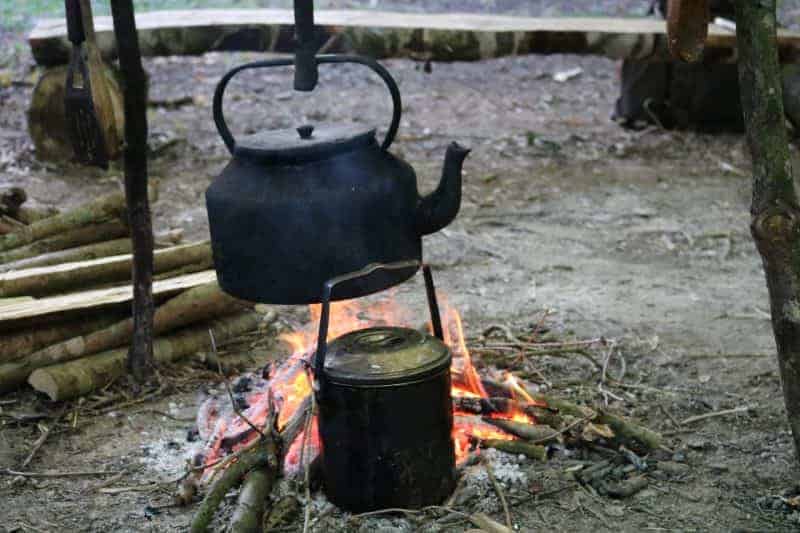
Broadly speaking, water purification falls into two main categories; boiling and chemical.
However, before you start purifying water it is best to remove the turbidity that we discussed in the first part of the blog. Remember that turgidity is particles that are individually invisible to the naked eye. The best way of removing turbidity from water is by using an old Millbank bag or brown filter bag (these are available from various online outlets).
Once you’ve removed all the sediment and turbidity from water then the time has come to purify it. Let’s look at the two main options for water purification.
Chemical water purification
Chemical water purification is not as surefire as boiling water. Some, such as chlorine dioxide will deactivate most pathogenic organisms. Other chemicals, such as chlorine will kill the majority of pathogenic organisms.
Activated carbon filters can remove certain, but not all types, of chemical pollutants.
Boiling water purification
Boiling is the best and safest way to purify water. Bring the water you want to purify to the boil and then hold it on a rolling boil for four minutes. This might be slightly more than is needed but it’s better to be safe than sorry. Boiling will kill all pathogenic organisms but it will not remove any chemical pollutants.
Of course, being able to boil water means being able to make a fire. To learn more about fire lighting in the winter read our blog ‘Lighting a fire in the winter: Tips for UK bushcraft and camping’

